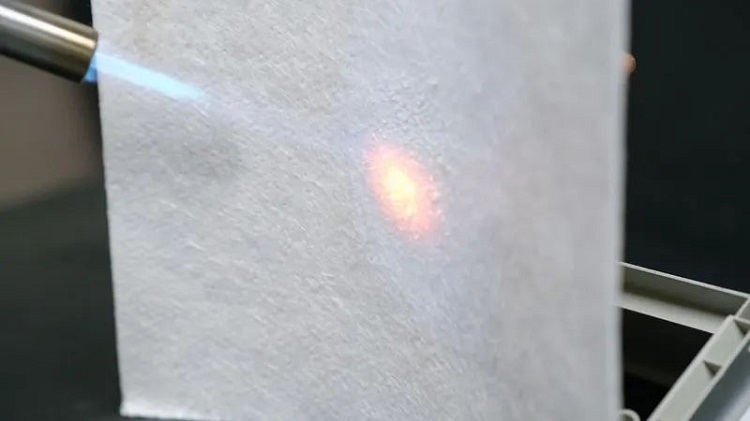

SEARCH
Aerogel is a kind of material with low density, high specific surface area and excellent thermal insulation properties. It is usually combined with reinforced fiber to make aerogel felt or aerogel coating and other new thermal insulation materials. Aerogel thermal insulation materials have certain potential and application prospects in the field of construction. Because of its light weight, heat insulation, sound absorption and other characteristics, it can be used for building heat insulation, reduce energy consumption, improve indoor environment and so on.

1, the role of aerogel thermal insulation materials in the field of construction
The thermal conductivity of aerogel insulation material is low (0.012~0.024W/m·K), and its thermal insulation performance is far better than that of traditional materials. The use of aerogel thermal insulation materials on the exterior walls, roofs and floors of buildings can effectively reduce the transfer of heat and keep the indoor temperature stable. In cold winter, aerogel insulation materials can prevent the invasion of outdoor cold air and reduce heat loss; In the hot summer, it can block the invasion of outdoor high temperature and keep the indoor cool. This excellent thermal insulation performance not only improves the energy efficiency of the building, but also improves the comfort of the occupants.
In addition, the aerogel thermal insulation material also has ultra-thin high temperature resistance. In the field of construction, fire safety is a crucial part. The combustion performance of the aerogel thermal insulation material reaches class A, which will not produce toxic gases even at high temperatures, effectively ensuring the safety of the building. In addition, its thickness is 1/5 thinner than the traditional material, so it can greatly reduce the occupied area of the material. This feature makes aerogel felt widely used in high-rise buildings, public places and other buildings with high fire protection requirements.
In addition to fire and thermal insulation properties, aerogel thermal insulation materials also have acoustic properties. The structure and characteristics of aerogel thermal insulation materials can effectively absorb and dissipate sound waves, reducing the propagation of noise inside the building. This is important to improve the comfort and quality of indoor environments, especially in noise-dense urban environments.
Aerogel insulation materials can help building insulation materials break through the bottleneck of their own development, effectively promote the development of residential industrialization, building energy conservation and its evaluation and other industries, so as to promote the industrialization process of building energy conservation and green building, can effectively improve the function of energy conservation and environmental protection, and actively promote the green development of China's building energy conservation industry.
2, the limitations of aerogel thermal insulation materials in the field of construction
Despite the many advantages of aerogel insulation, it also has some limitations. First of all, the production cost of aerogel thermal insulation materials is relatively high, resulting in a high market price. This has made its high price unaffordable for some construction projects with limited budgets, thus limiting its popularity in the market.
Secondly, the mechanical strength of aerogel thermal insulation materials is relatively low, and it is vulnerable to external damage. In the installation and use process, special attention needs to be paid to avoid excessive pressure or impact on it, so as to avoid damage to it.
Aerogel thermal insulation materials play a significant role in the field of construction, and its excellent thermal insulation, ultra-thin high temperature resistance, sound absorption and sound insulation properties provide better energy efficiency and safety for buildings. However, its high price, low mechanical strength and other limitations also need to be noted in the application.